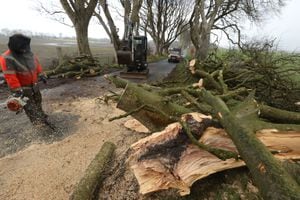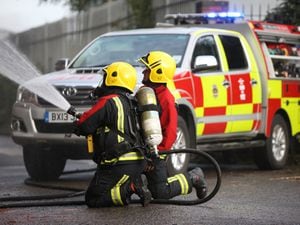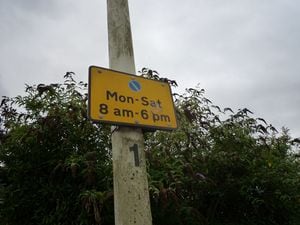Find out how and why storms in the UK are named
When are new storm names announced?

Since named storms were first launched in 2015 the Met Office has issued a new list of names each September. The list runs from early September to late August the following year, to coincide with the start of autumn and the end of summer, when we see the likelihood of low-pressure systems and the potential for named storms increase.
Why are we naming storms?
The Met Office says the naming of storms using a single authoritative system provides a consistent message and aids the communication of approaching severe weather through media partners and other government agencies. In this way the public will be better placed to keep themselves, their property and businesses safe.
Can anyone suggest a storm name?
A new list of names is compiled jointly between the UK Met Office, the Irish Met Éireann and the Dutch KNMI. Everyone is welcome to suggest names for future consideration via email to nameourstorms@metoffice.gov.uk.
When is a storm named?
In the UK a storm will be named when it has the potential to cause disruption or damage which could result in an amber or red warning. This is based on our National Severe Weather Warnings service, which is a combination of both the impact the weather may have, and the likelihood of those impacts occurring.
How is a storm named?
When the criteria for naming a storm are met, either the Met Office, Met Éireann or KNMI can name a storm, taking the name from the latest list in alphabetical order.
UK and US Storm names?
To avoid any confusion over naming, if a storm is the remnants of a tropical storm or hurricane that has moved across the Atlantic, the name would not be changed and would follow the established method of being referred to as 'ex-hurricane Ophelia' for example.The Met Office will only use names that have been officially designated by the National Weather Service in the US.
Do other countries around the world use a similar system?
In Europe, the UK, Ireland and the Netherlands work together as the western storm naming group. Spain, Portugal, France, Belgium and Luxembourg together make up the south-western storm naming group and Norway, Sweden and Denmark are the northern group.
Why are there no storms for Q, U, X, Y and Z?
To ensure Europe is in line with the US National Hurricane Centre naming conventions, there are no names that begin with the letters Q, U, X, Y and Z. This maintains consistency for official storm naming in the North Atlantic.

How are storm names chosen?
The Met Office receives thousands of suggestions throughout the year from the public and this years list has been compiled from these public suggestions, plus suggestions from Met Éireann and KNMI, choosing some of the more popular names and names that reflect the diversity of the UK, Ireland and the Netherlands.
What does climate change mean for storms?
In the recent climate, the Met Office says there is no evidence of positive or negative trends in windstorm number or intensity. Trends in windstorm numbers are difficult to detect, due to how these naturally vary year-to-year and decade-to-decade.





